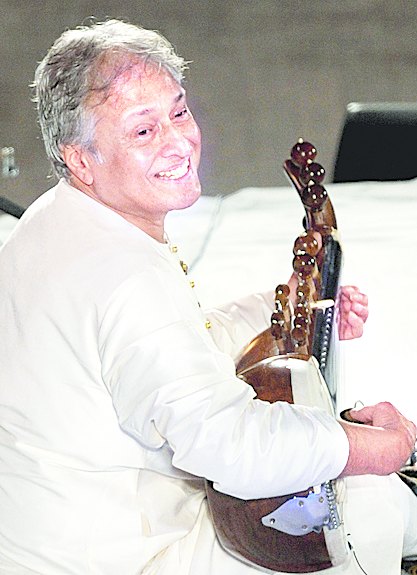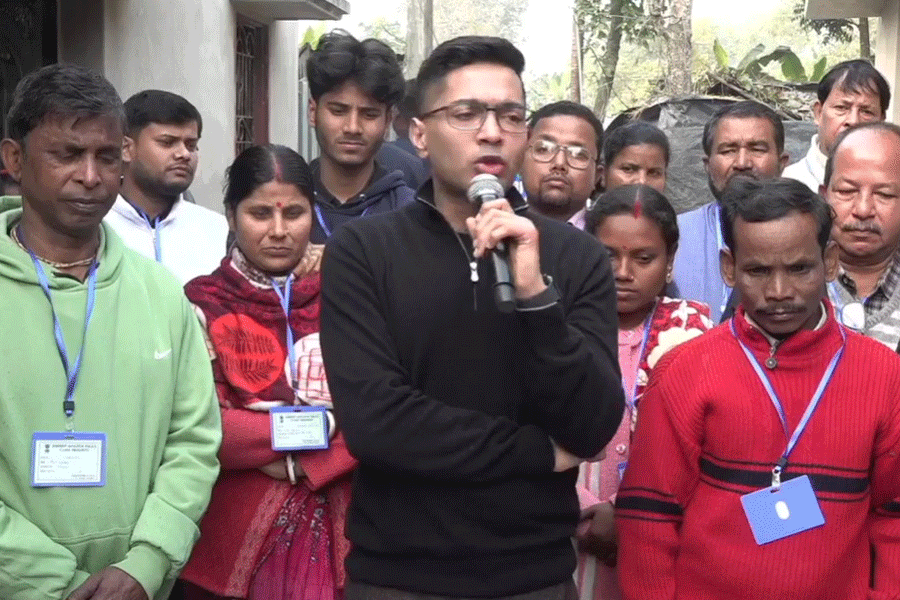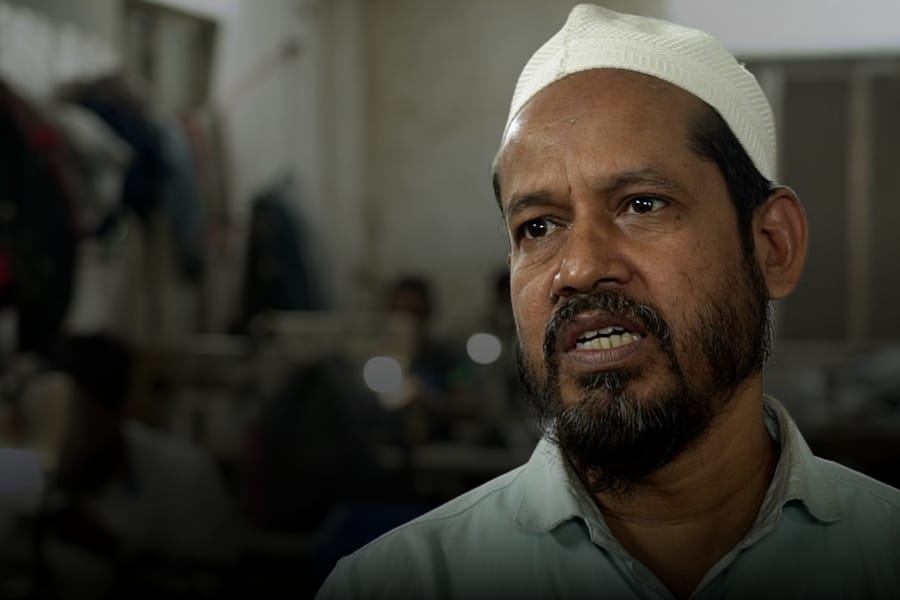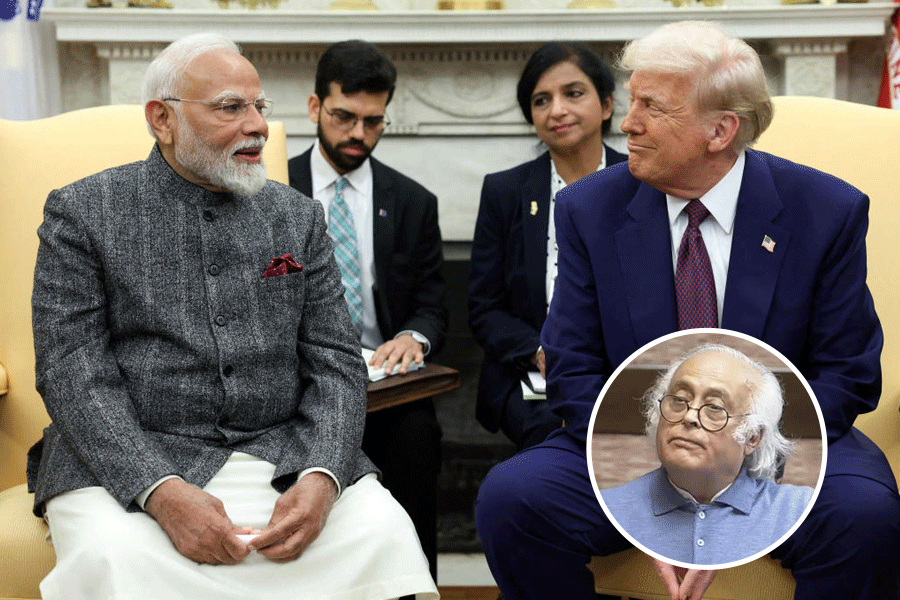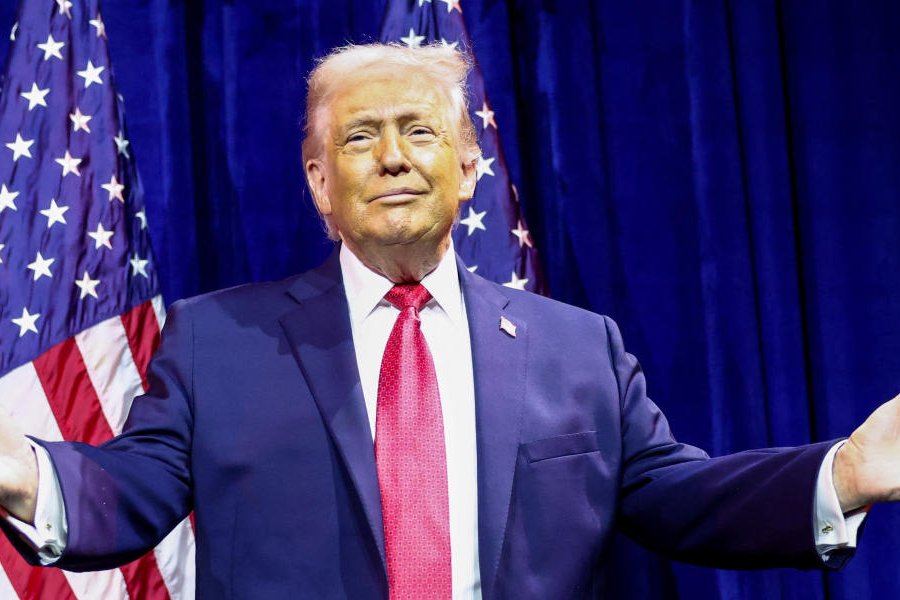
The dawn breaks on the city with new expectations. At the 63rd Dover Lane Music Conference, when Ustad Amjad Ali Khan (picture, left) touched the keynotes of his own creation, Raga Sohag Bhairav, the colours of eternal love mixed with those of the pre-sunrise canvas. His alaap as well as the gats in this exceptionally beautiful raga eradicated the emptiness of day-to-day life. But before this, he made his listeners absorb his mellifluous alaap in Darbari Kanada.
The hidden emotions came out with the rendition of jor and jhala. When he shifted to Raga Durga, it was as if he had restructured joy. His creation completed a circle when he commenced with Bhairavi through a phase of Bilaskhani Todi. To the efficient tabla accompaniment of Sabir Khan and Anindya Chattopadhyay, Amjad Ali Khan played Bhairavi gat with his feather-like fingers. What could have been a better start to the day!
Like him, Pandit Venkatesh Kumar (picture, right) also kept surprises in store in layers, which came out one after the other. Although the time was quite late for Yaman, he did not get confused with it. Rather, his bold, generous and melodious presentation of the vilambit kheyal with taans in three octaves mesmerized the audience. His presentation of a popular kheyal, ' Sakhi eri ali piya bina', was truly exceptional -the power of his voice increased the beauty of the taan presentation in the middle and lower octaves. The madhyalay jhamptaal kheyal and the drut kheyal in teentaal in Raga Durga were enthralling. Even a brief performance in Raga Sohini in drut ektaal was arresting.
Amaan Ali Khan overwhelmed his listeners with Raga Malkauns, with its late-night charm. He took a little time to stabilize in his alaap, but soon he began to create the atmosphere. His experimentation with rhythm and tempo in the last phase of his prolonged alaap showed his skill as a mature sarodia. The gat composed in dhamar revealed Amaan's expertise in blending speed and melody with his fingers. Aided by the efficient tabla of Shubhankar Banerjee, Amaan's forceful taan and complicated tihais attracted the audience.
Amaan played aochaar and madhyalay ektaal gat in Raga Saraswati in his unique style. His compact and excellent rendition of Miyan ki Todi will also be remembered for long. Ashwini Bhide-Deshpande too gave an enchanting performance of Malkauns. Notwithstanding some initial hesitation, her wonderfully balanced voice was able to recreate the magic of the raga through the vilambit kheyal in Rupak taal and drut kheyal in teentaal. Ashwini presented a madhyalay kheyal and drut kheyals in ektaal and teentaal in Tilak Kamod. Her style perfectly captured the delightful mood of the raga.
The magic of these artists somehow made irrelevant the out-of-tune and annoying Jhinjhoti or Piloo of Abir Hussain; the unimpressive vocal recital of Sarathi Chatterjee in Ragas Bagheshree and Hameer and drut kheyal in Anandi; and the monotonous behag of Sanjeev and Ashwini Shankar. The last-mentioned duo gave a better performance in Raga Vasanth and Mishra Piloo.
Kala Ramnath's violin in Raga Gorakh Kalyan was truly interesting. Her alaap, jor and jhala resonated with melody, which made the raga sweet to the ears. But in comparison, the next presentation of the artist - ektaal gat in Hameer -lacked a little in energy. Santoor player Bhajan Sopori tried to make a difference through his careful and complicated style of playing. But his ektaal gat in Raga Champakali was not up to the mark.

The name, Bombay Jayashri Ramnath, created an expectation. But the voice of this well-trained singer of Carnatic music was not in its full bloom initially when she sang Raga Mohini Kalyan followed by Kafi. She caught the attention while she sang the famous ' Krishna ni begane baro' and a kriti in Bhairavi. Shujaat Khan made an attractive start with the alaap of Bilaskhani Todi. But after a while, an unnecessary hurry spoilt the expression of the raga.
Senior artist Pandit Arun Bhaduri tried his best to sing vilambit and drut kheyals in Raga Jogkauns. He sounded soulful in the famous composition of Raga Hamsadhwani, ' Laagi lagan'. Raga Jogkauns was the choice of another senior artist, Vidushi Prabha Atre, as well. The initial part of her vilambit kheyal was good but age came in the way of the drut kheyal and the next presentation in Bageshree.
Shubha Mudgal was unable to meet the audience's expectation. Her commencement of the vilambit kheyal in Raga Jogkauns created an ambience of freshness that was carried over to the drut kheyal. But the same movements in a particular structure in Raga Vasanth bored the listeners. The solo tabla lahara by Swapan Chaudhuri was captivating. Although Nityanand Haldipur took some time to bring out the charm of Raga Hemanth, he was quite skilful in his presentation of the alaap, jor and jhala. His gat was intricate, but could have been shortened.
The haunting melody of Raga Pushpachandrika created by the flute maestro, Pannalal Ghosh, was truly praiseworthy. Raga Parameshwari got a full bloom in the flute of Shashank Subramanyam, the sitar of Subhendu Rao and the cello of Saskia Rao. The listeners were enchanted by an elongated and beautiful alaap by the Gundecha Brothers in Raga Yaman. But the length of the chowtaal composition created monotony.
In tabla accompaniment, Samar Saha, Sanjay Adhikari, Shubhajyoti Guha, Sandip Ghosh, Amit Choubey, Anish Pradhan and in harmonium, Rupashree Bhattacharya, Hiranmay Mishra and Sanatan Goswami are mentionable.

